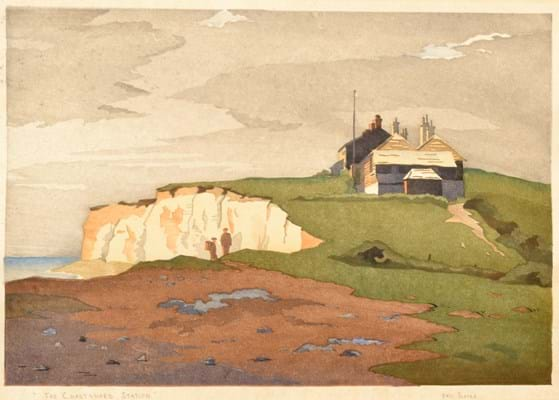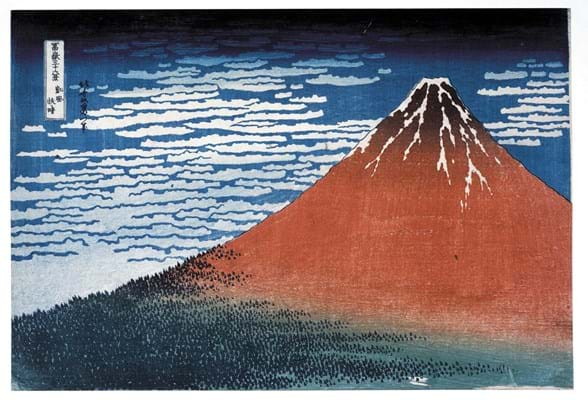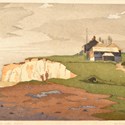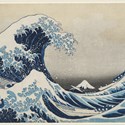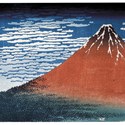In the UK this year they will again be influencing fresh generations thanks to exhibitions coming up in London displaying stunning examples from the original masters of the craft.
Meanwhile, on the south coast, a little-known British group also heavily influenced by the woodblocks (ukiyo-e, aka pictures of then floating world) will be celebrated in a show running at Hastings Museum and Art Gallery from May 26 to September 3.
Eric Slater (1896-1963) and his mentor Arthur Rigden Read (1879-1955) were part of a small group of men and women who learned the Japanese method of colour printing which was used to produce Hokusai’s the Great Wave and other 19th century Japanese prints.
Former BBC journalist James Trollope, who has written a book about the artist called Slater’s Sussex (ericslater.co.uk), has helped to organise this exhibition. He says: “In Japan skilled craftsmen transformed designs by Hokusai and others into prints. In Britain, artists like Slater and Rigden Read did the carving and printing as well as the design.
“An artist and teacher called Frank Morley Fletcher (1866-1949) pioneered the technique in Britain and in 1916 wrote a ‘how to do’ manual which introduced many artists to the process. Colour woodcuts of the 1920s and ‘30s have been overshadowed by Grosvenor School linocuts of the same period but prices for Slater’s work and others are on the rise.”
Slater produced more than 30 colour woodcuts between 1926 and the outbreak of the Second World War. Many depict scenes near his home in Seaford, East Sussex, where he lived for most of his adult life.
He studied at The Hastings School of Art. He was probably taught how to make woodcuts by his neighbour Arthur Rigden Read (1879-1955) who had been to Japan to study oriental woodcut techniques used by European printmakers from the 1890s.
A test case at auction for Slater’s popularity comes up on January 26 at the David Lay saleroom in Penzance, Cornwall. The 1930 colour woodcut shown above by him is estimated at £200-300.
It shows the Coastguard Station at Cuckmere Haven in East Sussex, which is now “perilously close to the cliff edge” because of coastal erosion, adds Trollope.
As he acknowledges, the Grosvenor School linocuts by artists such as Cyril Power and Sybil Andrews from this time have dominated auction tastes over the past few years, selling for ever-higher sums.
Hokusai on a wave
However, the latest exhibitions could have a knock-on effect for Slater and his contemporaries. Katsushika Hokusai (1760-1849) is best known for the instantly familiar magnificent Great Wave woodcut, c.1831, and the British Museum from May 25 to August 13 is holding Hokusai: beyond the Great Wave.
According to the museum, the display “will lead you on an artistic journey through the last 30 years of Hokusai’s life – a time when he produced some of his most famous masterpieces”. Yes, the Great Wave, which is itself part of a print series of views of Mt Fuji, does feature, a fine, early impression acquired in 2008 by the British Museum with the assistance of the Art Fund.
Hokusai created this masterpiece - known under its more formal title as Under the wave off Kanagawa - when he was about 70. Mt Fuji and its wider spiritual significance was a model for Hokusai in his quest for immortality during his later years. The print series Thirty-Six Views of Mt Fuji (published c.1831-33) revived Hokusai’s career after personal challenges of the late 1820s.
While Japanese artists did influence the West, it was not all one-way: the Great Wave, with its use of deep perspective and imported Prussian blue pigment, reflects how Hokusai adapted and experimented with European artistic style.
The exhibition is supported by Mitsubishi Corporation
Take pleasure in art
If you can’t wait that long, try Sheer Pleasure – Frank Brangwyn and the Art of Japan, from February 4 to May 14, at the William Morris Gallery in Walthamstow, north-east London. This shows important Japanese paintings, prints, furniture and ceramics belonging to the personal collection of the gallery’s founder, the English painter and graphic artist Frank Brangwyn RA (1867-1956).
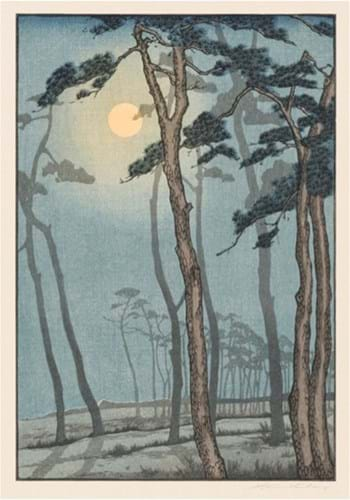
The Pines, c.1928, by Yoshijiro Urushibara, is one of the works on show at the William Morris Gallery exhibition Sheer Pleasure – Frank Brangwyn and the Art of Japan, from February 4 to May 14. © William Morris Gallery, London Borough of Waltham Forest
Many works will be displayed publicly for the first time, alongside important examples of Brangwyn’s own creations. Marking the 150th anniversary of Brangwyn's birth, the exhibition will explore the influence of Japanese art on his work, as well as his relationship with renowned Japanese artist Yoshijiro Urushibara (1888–1953).
It will also cover Brangwyn’s relationship with his patron Kojiro Matsukata and their plans to open a gallery of Western art in Tokyo. Matsukata became a long-standing patron of Brangwyn after they were introduced in Europe and in turn Brangwyn acted as an art advisor for the Matsukata collection.
Highlights from the collection include famous woodblock prints by Hokusai and Utagawa Hiroshige (1797-1858), another well-known master of the art, as well as a selection of important works from Brangwyn’s extensive collection of Japanese ceramics, on loan from the Fitzwilliam Museum, Cambridge.
Brangwyn was an apprentice to William Morris from 1882-84 and shared his belief that art should be as widely accessible as possible, rather than restricted to a wealthy elite.
Brangwyn donated a significant number of his own works, along with his personal collection of Japanese art, to the founding collection of the William Morris Gallery as “a humble offering to the people of Walthamstow in the hope that they will enjoy art and remember Morris”. As a result, the council-run gallery holds the second largest collection of Brangwyn's work in England as well as a little-known Japanese art collection.


